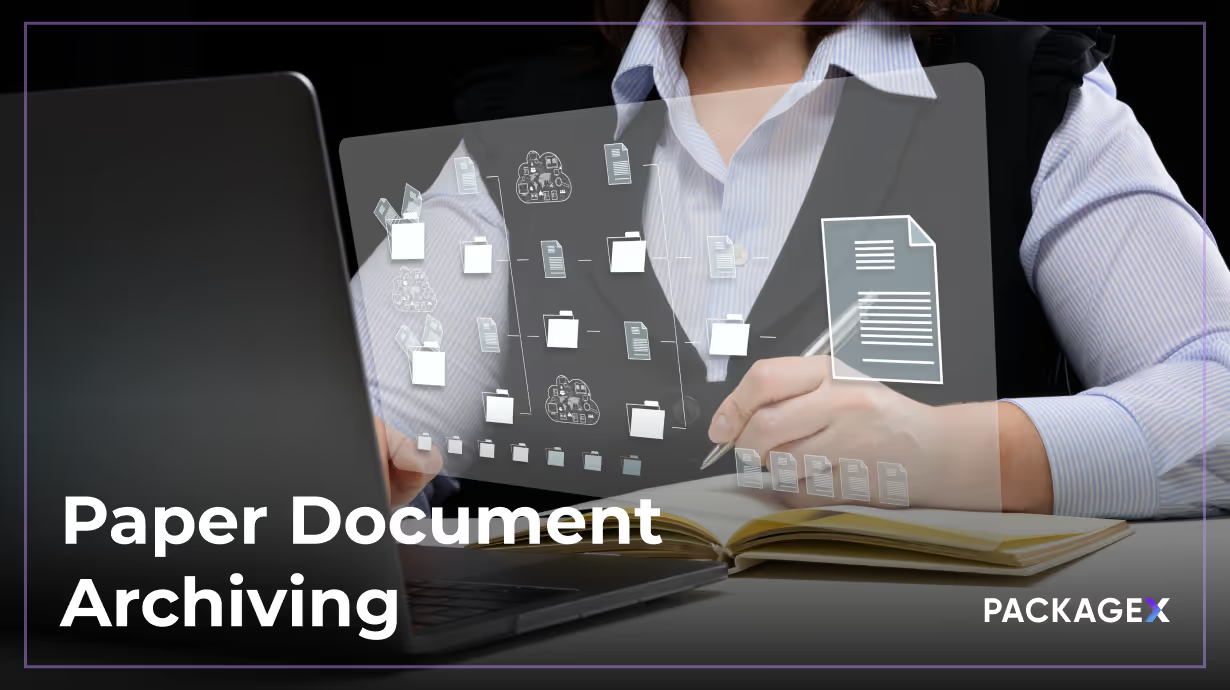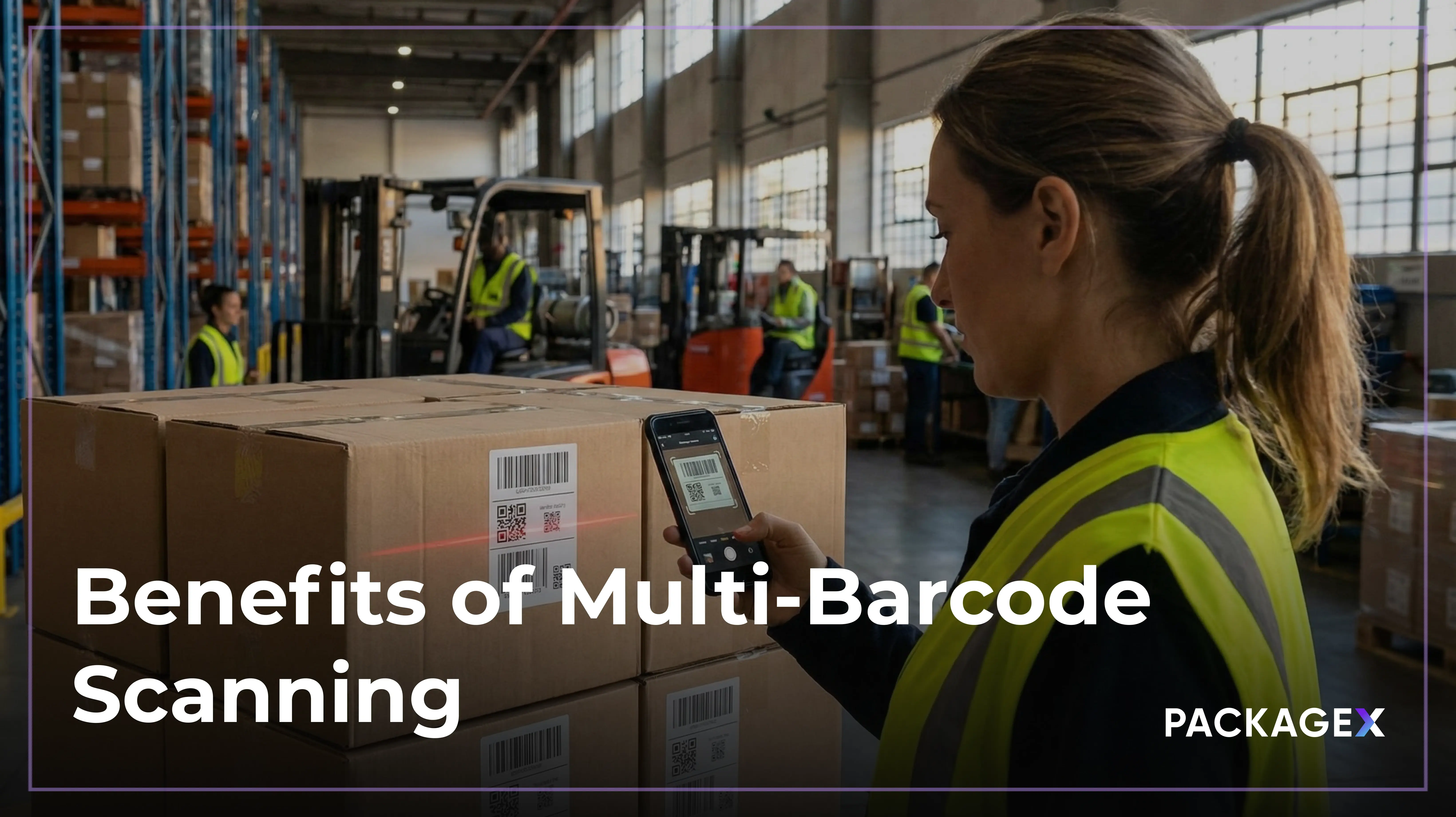Did you know that document mismanagement results in operational disruptions that affect 71% of all businesses?
Paper document archiving is far more than a mundane task. It's a fundamental process that protects your business, ensures compliance, and secures critical information for future reference. Proper document archiving is about creating a system that’s efficient, secure, and legally sound. Not just putting papers aside in a box.
As more companies are turning to digital solutions, the way we approach archiving has changed drastically. No matter if you're looking to organize paper records or shift to electronic systems, understanding the best practices in document archiving can help streamline workflows, reduce costs, and improve data security.
In this guide, we’ll explore how archiving paper documents can secure your business and how digital tools are transforming traditional archiving practices.
What is Document Archiving?
Document archiving is the process of sorting and storing inactive records for long-term preservation and easy retrieval. It involves organizing both physical and digital documents systematically to ensure their security, integrity, and accessibility over time.
This process helps businesses and organizations comply with data retention policies and privacy regulations while protecting valuable information.
By sorting inactive records and securely archiving them, organizations reduce the risk of data loss, legal complications, and inefficiency. Proper paper document archiving ensures that important documents, such as contracts, financial records, and legal files, remain safe and can be accessed quickly when needed.
Whether archived digitally or physically, effective document archiving streamlines retrieval and enhances operational efficiency.
For example, a study by the National Archives and Records Administration (NARA) highlights that over 60% of businesses face risks due to poor document management, including data loss and legal disputes related to missing records.
Legal and Compliance Considerations
Archiving documents is not just a matter of ease of access; it’s often a legal requirement. Many industries, specifically building logistics, are bound by strict regulations that mandate the retention of certain records for specified periods.
For instance, financial institutions must also keep records for up to seven years to comply with tax laws, while healthcare providers are required to retain medical records for a minimum of six years.
Failure to follow these archiving protocols could result in penalties, legal challenges, or loss of credibility. Proper document archiving ensures that organizations comply with both local and international regulations, providing legal protection in case of audits, disputes, or investigations.
Types of Document Archiving:
When it comes to managing documents, businesses have several methods to choose from. Each method has its benefits, depending on specific needs.
Below are the main types of document archiving:
1-Physical Archiving
Physical archiving involves storing paper documents in filing cabinets, storage boxes, or offsite facilities. Traditional methods require significant space and slow document retrieval - a key reason many businesses are now archiving paper documents electronically.
Studies show employees waste 2 hours daily searching for paper files, costing businesses 21.3% in lost productivity (FileCenter, 2025). Managing large paper volumes often reduces efficiency and increases operational costs compared to digital solutions.
2-Digital Archiving
Digital archiving is the process of converting paper documents into digital formats. Such as PDFs or scanned images with the help of AI and Automation. This method makes documents easier to store, access, and secure.
With digital archiving, businesses can store thousands of files in a fraction of the space physical storage would require. It also simplifies document retrieval and helps ensure compliance with legal and regulatory standards.
3-Cloud Archiving
Cloud archiving is another popular option for businesses. Storing documents on the cloud offers scalability and remote access. Companies can upload and store documents online, making them accessible from anywhere with an internet connection.
Cloud solutions offer remote access and scalability. 80% of businesses use cloud storage, with 59% of CIOs prioritizing it for efficiency (Business.com, 2024). The rise of cloud archiving has made it easier for businesses to manage large volumes of documents without the need for physical storage infrastructure.
4-Hybrid Archiving
Hybrid archiving combines both physical and digital storage methods. This approach allows businesses to archive paper documents for legal or compliance reasons while also enjoying the benefits of digital storage. This method is often used when businesses are transitioning from physical to digital archiving or when they need to preserve specific documents in physical form.
Best Practices for Physical Document Archiving
Effective physical document archiving requires you to adopt the following best way to archive paper documents, ensuring both longevity and easy retrieval of critical information.
1-Sorting and Decluttering
Start by reviewing documents to identify those that are no longer needed. Eliminating outdated or redundant records is one of the best methods for archiving paper documents. By reducing clutter, you'll free up valuable storage space. Studies show that businesses can save up to 20% in storage costs just by cutting down on unnecessary paperwork..
2-Proper Labeling and Indexing
A consistent labeling and indexing system is key to efficient document management. Use clear, concise labels that categorize files in a way that makes sense for your business. This approach enables quick access when you need to locate specific documents.
3-Optimal Storage Conditions
Paper documents require the right environment to stay in good condition. Store them in optimal storage conditions with temperature and humidity control. The ideal temperature range is between 60-70°F (15-21°C), with a humidity level of 30-50%. Extreme fluctuations in temperature or humidity can cause paper to deteriorate or become brittle over time.
4-Protective Measures
To prevent physical damage, store documents in acid-free folders or archival boxes. For documents that require extra protection, consider using fireproof and waterproof storage solutions. This will safeguard your records from disasters like fires or floods, which can otherwise lead to irreversible damage.
By following these tips for archiving paper documents, you can improve the efficiency of your archiving system.
Transitioning to Digital Archiving
More businesses are changing how they manage records by archiving paper documents electronically. Physical files take up space, are harder to track, and risk being lost or damaged. Digital archiving solves these issues by offering faster access, stronger security, and better organization.
The process usually starts with scanning. Old documents are converted into digital files using high-resolution scanners. OCR (Optical Character Recognition) tools are often used so that the text becomes searchable. This helps teams organize paper documents virtually based on department, file type, or other useful categories.
Here’s a quick comparison of physical vs. digital archiving:
Many organizations now archive documents online using SaaS-based cloud solutions. These cloud tools offer secure access, real-time collaboration, and automated backups. According to Salesforce, 94% of companies say cloud services provide better data protection than on-site servers.
Implementing a Document Management System (DMS)
A document management system (DMS) helps streamline how records are handled, especially when using paper document archiving systems.
Features to Look For
Look for systems with user access controls, fast search tools, and support for cloud integrations. At PackageX, we make it easier to manage and retrieve documents securely with built-in tools that simplify day-to-day workflows. Many teams are shifting to paper document archiving software to reduce physical storage and improve remote access.
Security Considerations
Data protection is key. Strong systems use encryption and keep track of who accessed what. PackageX supports secure storage with audit logs and access restrictions to reduce risk.
Retention and Disposal Policies
Some files must be kept for years. Automated retention rules let you archive or delete files on schedule, following best practices for archiving paper documents and saving space over time.
With PackageX, managing paper records digitally becomes faster, safer, and easier to scale.
Challenges and Solutions in Document Archiving
Using a combination of digital and physical approaches helps answer the common question: how do I archive paper documents securely and efficiently?
How PackageX Can Enhance Your Document Archiving
Managing paper records can slow down teams, increase overhead, and raise security concerns. PackageX simplifies these issues by helping businesses archive paper documents quickly and accurately. With smart tools and an easy-to-use interface, teams can organize, access, and manage archives without delays.
The platform supports paper document archiving software that includes intelligent scanning, searchable tagging, data annotation and structured indexing. It reduces manual sorting and improves accessibility. Businesses can retrieve archived files within seconds instead of hours, with the help of PackageX.
From seamless scanning and indexing to quick access and compliance management, PackageX is your ideal option.
FAQs
1. What is the best approach to archiving paper documents?
The ideal way to archive paper documents is by implementing a systematic process that involves sorting, labeling, and storing them in secure conditions. Consider archiving paper documents electronically for easier access and better preservation.
2. How do I archive old paper documents?
There are several ways to archive paper documents. Some if them are storing them physically, scanning and digitizing them, or using cloud-based platforms.
3. What are the methods of archiving paper documents?
Methods of archiving paper documents include physical storage, digitization, and cloud-based solutions. A hybrid approach combining physical and digital archiving ensures flexibility and security.




